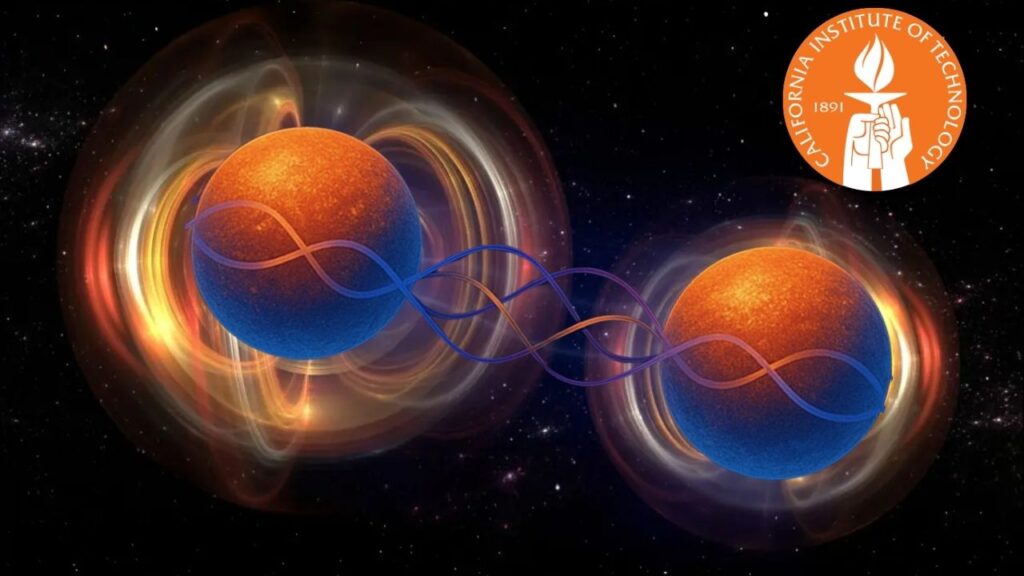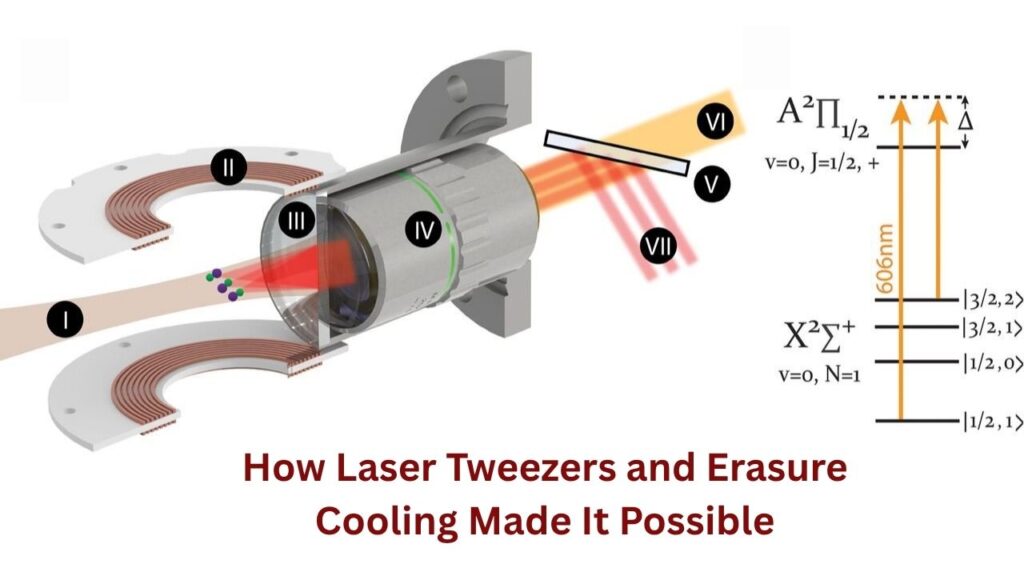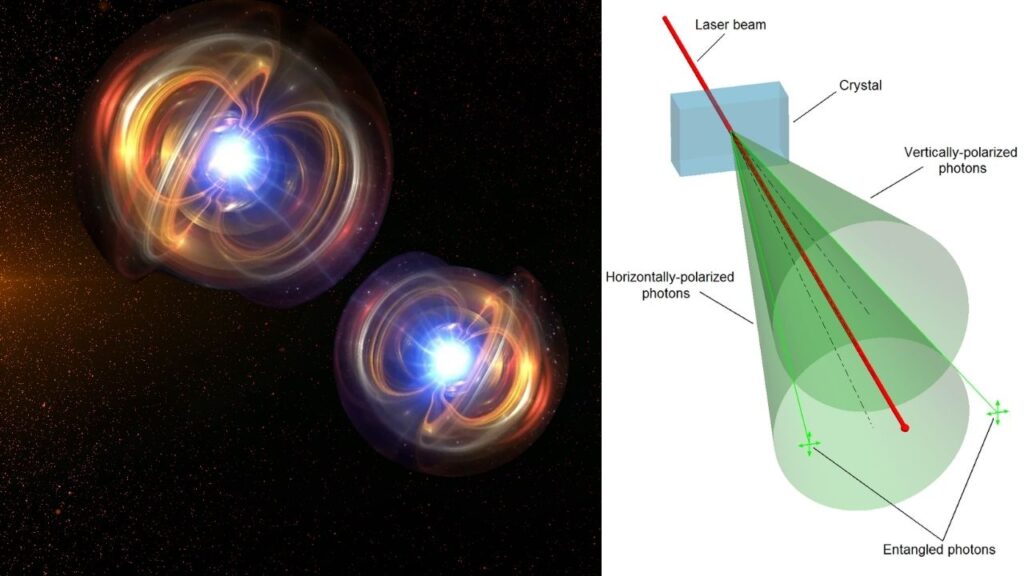Caltech Achieves Quantum Hyper-Entanglement Using Laser Tweezers: Quantum hyper-entanglement is one of the most exciting frontiers in modern physics, promising revolutionary advancements in computing, communications, and fundamental science. Recently, researchers at the California Institute of Technology (Caltech) achieved a significant breakthrough by creating hyper-entangled states in neutral atoms using laser-based optical tweezers. This development represents a major leap beyond traditional entanglement experiments, which mostly focused on photons and single quantum properties.

In this comprehensive article, we explore the science behind this breakthrough, explain how it was accomplished, and discuss its profound implications for quantum technology. We break down complex terms and processes into easy-to-understand sections, making this article accessible to curious readers of all backgrounds — from ten-year-olds to seasoned professionals.
Caltech Achieves Quantum Hyper-Entanglement Using Laser Tweezers
| Feature | Details |
|---|---|
| Research Institution | California Institute of Technology (Caltech) |
| Principal Investigator | Professor Manuel Endres |
| Quantum Phenomenon | Quantum Hyper-Entanglement (multi-property entanglement) |
| Tools & Techniques | Optical tweezers; Erasure cooling |
| Particles Used | Neutral alkaline-earth atoms |
| Significance | First hyper-entanglement demonstration in massive particles |
| Applications | Quantum computing, communication, sensing, fundamental physics |
| Research Publication | Caltech Research News |
The Caltech team’s demonstration of quantum hyper-entanglement in neutral atoms using laser tweezers and erasure cooling is a landmark achievement that signals exciting progress toward practical quantum technologies. As researchers refine these methods, we can anticipate more robust quantum processors, advanced communication systems, and deeper insights into the nature of reality.
This research reminds us that the quantum world, while complex, is increasingly within our control — opening a new era of scientific discovery and technological innovation.
Understanding Quantum Entanglement and Hyper-Entanglement

What Is Quantum Entanglement?
Quantum entanglement is a phenomenon in quantum mechanics where two or more particles become connected such that the quantum state of one instantaneously affects the state of the other, regardless of the distance between them. This connection transcends classical physics and underpins many quantum technologies.
Entangled particles share a single quantum property — like their spin, polarization, or energy level — making their states dependent on each other. Entanglement is a critical resource for quantum computing, cryptography, and teleportation.
The Concept of Hyper-Entanglement
Hyper-entanglement occurs when particles become entangled in multiple quantum properties simultaneously. For example, particles could be entangled in:
- Spin: The intrinsic angular momentum of particles.
- Electronic states: The energy levels or internal states of electrons within atoms.
- Motion or momentum: The vibrational or positional states of particles.
Entangling multiple degrees of freedom dramatically increases the information capacity of each quantum system and enhances the power of quantum operations.
Why Is Hyper-Entanglement Important?
Hyper-entanglement holds tremendous promise for advancing quantum information science by:
- Increasing Qubit Density: Encoding more information per particle can reduce the total number of particles required in quantum computers.
- Improving Error Correction: Multiple entangled properties provide richer correlations, enabling better error detection and correction in quantum circuits.
- Enhancing Quantum Communication: Higher-dimensional entangled states increase the security and bandwidth of quantum communication channels.
- Advancing Fundamental Physics: Studying hyper-entangled massive particles like atoms allows scientists to test deeper theories in quantum mechanics and the quantum-classical boundary.
Caltech’s Breakthrough: How Laser Tweezers and Erasure Cooling Made It Possible

The Caltech team, led by Professor Manuel Endres, accomplished the first-ever demonstration of hyper-entanglement in massive particles — specifically, neutral alkaline-earth atoms — by using two key technologies:
1. Optical Tweezers: Precision Control with Laser Light
Optical tweezers use highly focused laser beams to trap and manipulate individual atoms or microscopic particles. The laser light creates a potential well that holds the atom almost motionless in space.
Key advantages of optical tweezers for quantum experiments include:
- Single-Atom Addressability: Tweezers can trap one atom at a time, allowing precise quantum control.
- Flexibility: Tweezers can be arranged in arrays to build complex quantum systems.
- Non-Invasive Control: Laser wavelengths are carefully chosen to avoid exciting or damaging atoms.
2. Erasure Cooling: Bringing Atoms to Near Standstill
A novel cooling technique called erasure cooling was developed to reduce atomic motion, which can destroy delicate quantum states. Unlike traditional cooling methods, erasure cooling:
- Actively detects atomic motion: It measures thermal vibrations without destroying quantum coherence.
- Removes excess motion: Through feedback mechanisms, it cools the atoms down to their motional ground state.
This ultra-low motional energy is crucial because atomic motion is a major source of noise in quantum experiments.
Creating Hyper-Entangled States in Atoms: The Process Explained

Caltech’s researchers combined these tools to entangle both the motion and electronic states of individual atoms simultaneously.
- Step 1: Neutral alkaline-earth atoms were trapped in optical tweezers.
- Step 2: Erasure cooling was applied to bring the atoms to nearly zero motion.
- Step 3: Precise laser pulses manipulated the electronic states while preserving motional coherence.
- Step 4: The result was a hyper-entangled quantum state — the first such achievement in massive particles.
This complex entanglement is more challenging to maintain than single-property entanglement but offers exponentially richer quantum correlations.
Real-World Implications and Future Directions
Quantum Computing
Quantum computers rely on qubits, the quantum analogs of classical bits. Hyper-entangled atoms can serve as multi-qubit carriers, effectively packing more quantum information into fewer physical particles. This increases computational power and efficiency while reducing error rates.
Quantum Communication and Networks
Quantum networks depend on entangled particles to securely transmit information. Hyper-entanglement can boost channel capacity and improve resistance to noise and eavesdropping, enhancing future quantum internet capabilities.
Quantum Metrology and Sensing
Highly entangled states improve the precision of measurements beyond classical limits. Hyper-entanglement enables better quantum sensors for timekeeping, magnetic field detection, and gravitational wave observation.
Fundamental Research
Understanding hyper-entanglement in massive particles helps physicists explore the boundary between classical and quantum worlds and test theories such as quantum gravity and decoherence.
New Materials Support Progress Toward More Reliable Quantum Computers
Software Detects Glass Walls With 96% Accuracy Without Using Costly Sensors
FAQs About Caltech Achieves Quantum Hyper-Entanglement Using Laser Tweezers
What makes neutral alkaline-earth atoms suitable for this experiment?
Alkaline-earth atoms have two electrons in their outer shell, offering stable electronic states that are easier to control and less sensitive to environmental noise, making them excellent candidates for quantum manipulation.
How do optical tweezers avoid disturbing the quantum states of atoms?
The laser light used in optical tweezers is carefully tuned to wavelengths that trap atoms through dipole forces without causing electronic excitation or ionization, thus preserving quantum coherence.
Can hyper-entanglement be achieved in other particles besides atoms and photons?
In principle, yes. While photons and atoms are common, researchers are investigating hyper-entanglement in ions, molecules, and other systems, but technical challenges remain.
How does erasure cooling compare to laser cooling or evaporative cooling?
Erasure cooling is a feedback-based technique that actively detects and removes atomic motion without losing atoms, whereas laser cooling relies on photon momentum exchanges, and evaporative cooling sacrifices hotter atoms to cool the rest.






